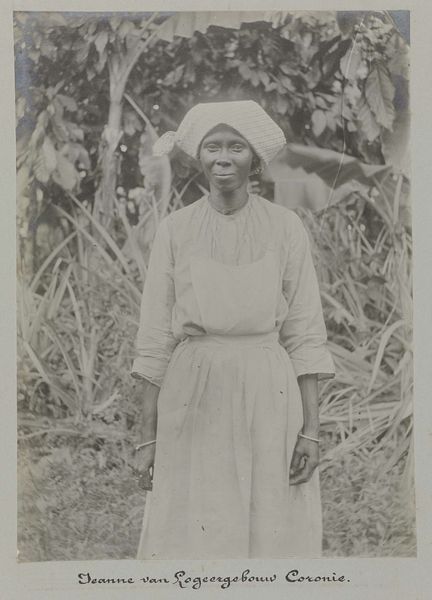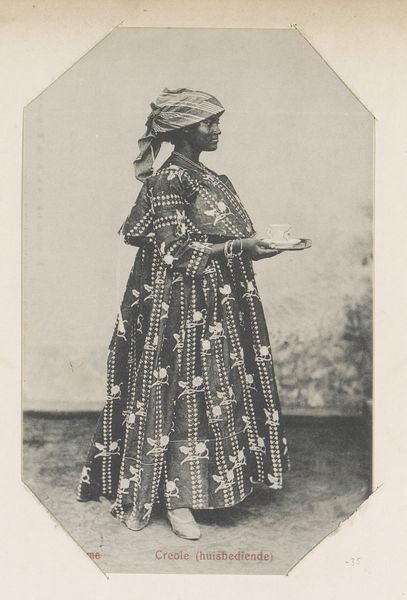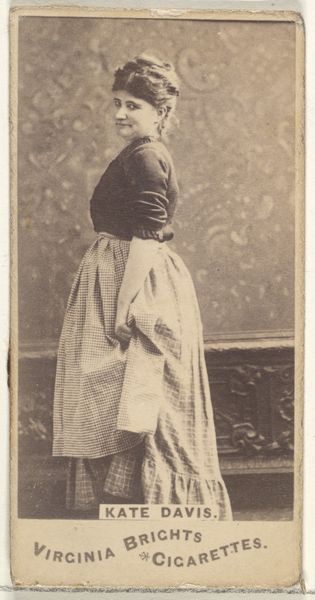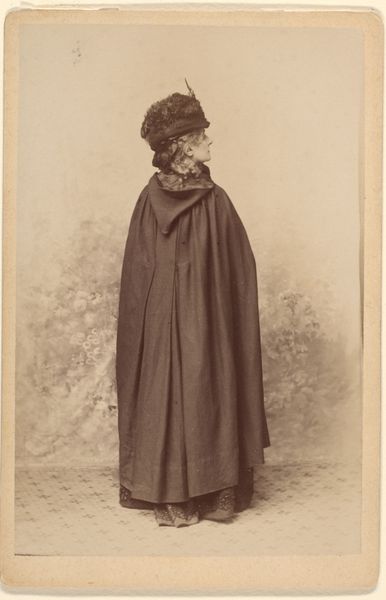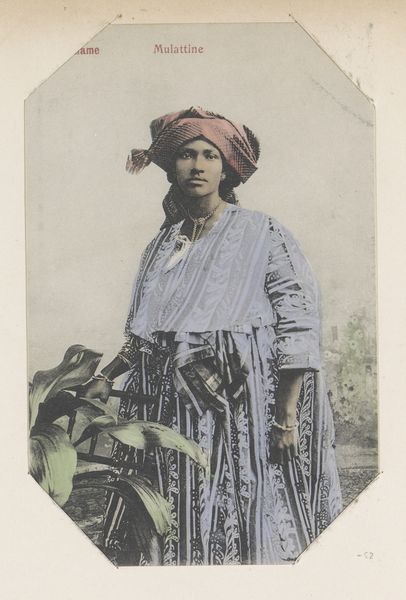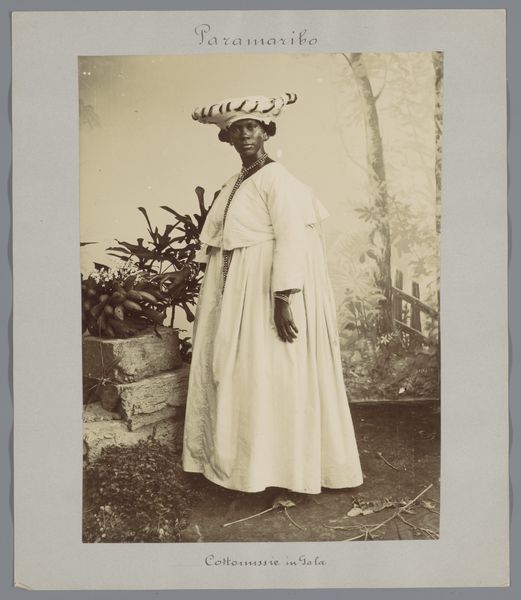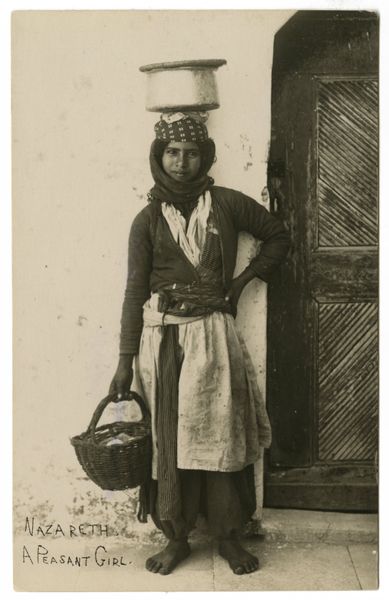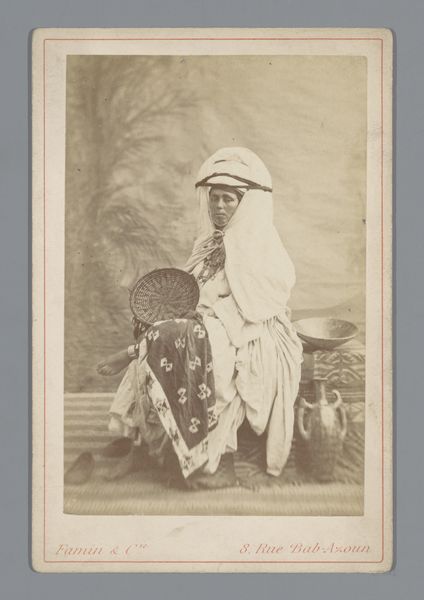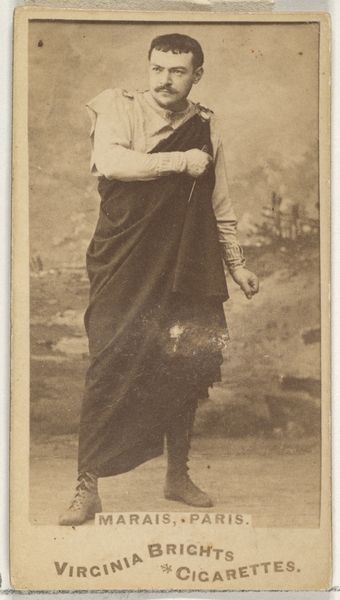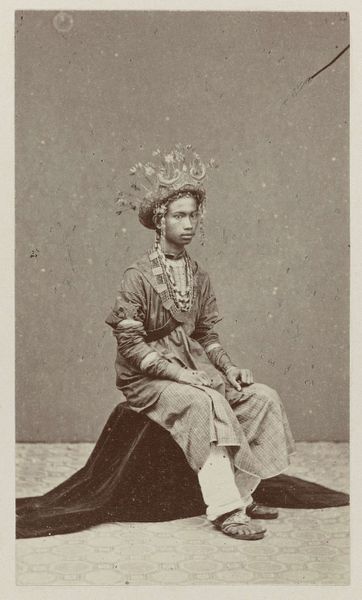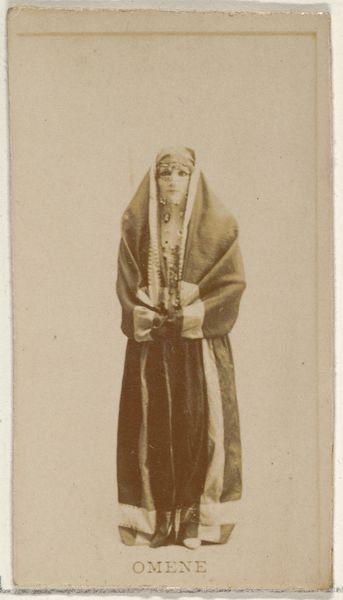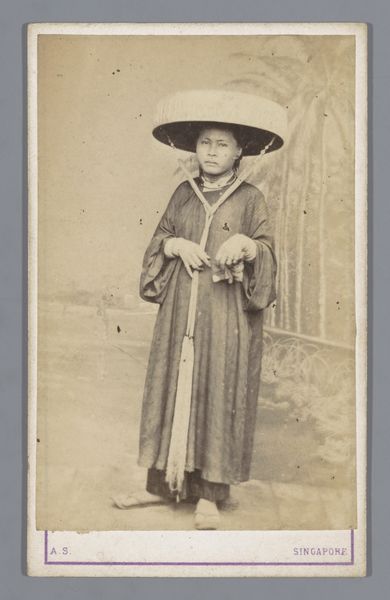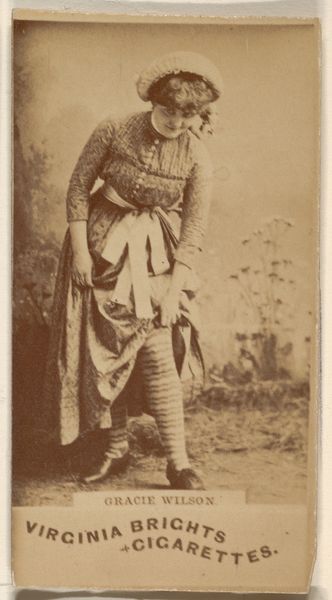
#
pencil drawn
#
amateur sketch
#
aged paper
#
toned paper
#
light pencil work
#
pencil sketch
#
sketch book
#
personal sketchbook
#
pencil drawing
#
pencil work
Dimensions: height 135 mm, width 90 mm
Copyright: Rijks Museum: Open Domain
Curator: Immediately, I see a portrait, quite serene, of a woman of Surinamese heritage, elegantly holding a metal bucket perfectly balanced on her head. Editor: Indeed. This drawing is titled “Surinaamse vrouw,” dating from around 1900 to 1910 and currently residing here at the Rijksmuseum. It's attributed to Eugen Klein. Curator: It's the paper, isn't it? Aged, toned—you can practically feel the history embedded in the very fibers. It draws attention to the physical making of the work, the artist's hand moving across this material with a pencil. The visible light pencil work makes the image very tactile and somehow present. Editor: Right, and consider the context. Colonial era. Whose gaze is behind this amateur sketch? This work enters the collection through circuits of power, shaped by cultural ideas about race and representation. How was it displayed? How did that framing shape the understanding of both the artwork, and its subject? Curator: Definitely! The bucket seems to hint at labor, everyday domestic life, though presented with grace and incredible poise. Was this an artistic study or perhaps a study of manual work from afar? The labor becomes a spectacle. The materials themselves – pencil on paper, point to the artist’s intention, to show or to scrutinize. Editor: And the placement of the image in the sketch book suggests a level of intimacy that belies its place now, as part of a vast imperial collection. It suggests that this may have been made with little intervention from those within Suriname, and more from an outsider. It calls for the importance of considering how such work has impacted art and art-making since its original creation. Curator: Looking closely, I find myself contemplating the untold stories, the physical endurance this woman embodies. It brings home how material choices and artistic methods reveal as much as they conceal, influencing how we perceive both subject and object. Editor: Absolutely. When we consider the socio-political implications embedded in works of this kind, they open up fascinating avenues for discussion around the power dynamics inherent in art production and its display within institutions such as ours.
Comments
No comments
Be the first to comment and join the conversation on the ultimate creative platform.
